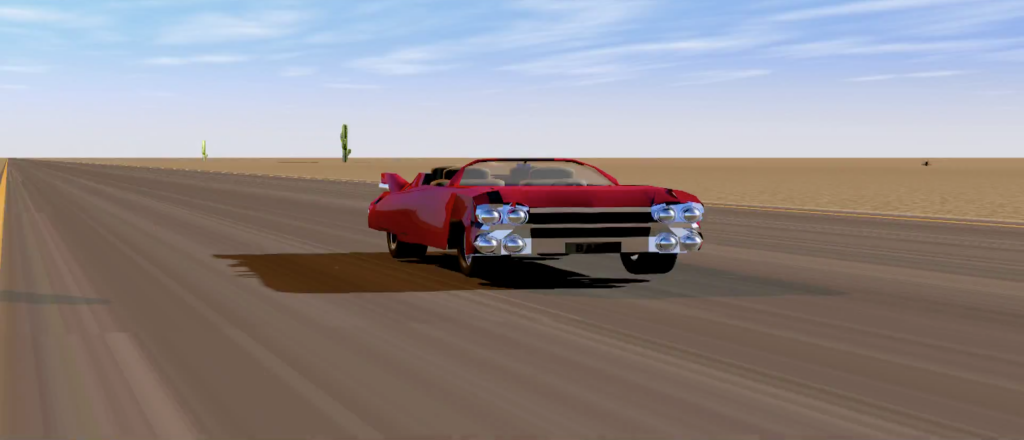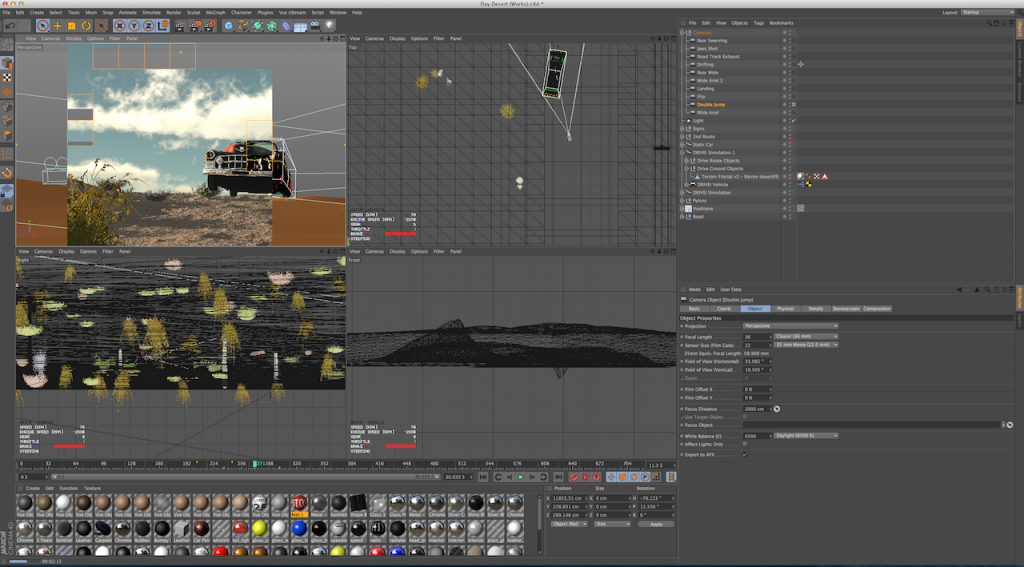
“If it can be written, or thought, it can be filmed”
CGI: A BEAUTIFUL DISASTER
Your most loyal Director is an Old School Filmmaker at heart. I grew up idolising the Kubrick’s, Hitchcock’s and any Horror schlock that could be snuck in at the midnight hour. Classic storytelling with a subversion of the norms teased me into this career and I feel honoured just to take a seat on this roller-coaster.
These visionaries championed inventive new ways to integrate technology into their craft, so when the tired outcries of ‘CGI is the death of Cinema’ are hurled, I declare ‘Nay, it is the storyteller behind the effects not the technology itself’.
When we first booted up the advanced 3D software Cinema 4D five years ago, my Director eyes widened. I had this infinite playground of opportunities, which any resource strapped Filmmaker surely can identify as nothing short of witchcraft. 2016 is here, and The Bats really know how to work this voodoo to our narrative advantage.
THE BATMOBILE
The red convertible was The Bat’s Ronald McDonald. a symbol of velocity, rebellion and dare I say, effortlessly cool. 2011’s ‘Batmobile’ was a rigid, dainty little number, it’s movement all programmed via keyframes. That beast chugged along the road as intended, but to today’s savvy audience it would not fly.
In the reboot, we demanded ferocious throttle, realistic weight, and dynamic movement that really sold a muscle car traversing a coarse desert terrain. We uncovered every video out there of vehicles attacking dunes, breaking down the traction, drifting and influence they had when rubber hits sand. Our office walls started to resemble what we could only assume was Jeremy Clarkson’s darkest fantasy.
Knowing keyframes was out of the question, we had to bring in the support of the excellent Drive plugin by Heyne. With this software we inputted the exact specifications of the car (1960 Cadillac Eldorado) right down to the engine size and horsepower. Combined with our research, we tweaked settings that would inform the Drive plugin the vehicle was driving on a bumpy landscape.
A VUE TO KILL FOR
The entire project was a personal homage to our journey of building this empire and I just couldn’t see anyone else other than yours truly to get behind the wheel as Lead Editor. Cutting is without doubt one of my strengths, so within a week, I had a solid draft. What’s that you say? Where did the other two years of Production come from? Hang tight baby birds, I’ll feed you.
We can thank the cutting-edge environment software Vue xStream for that.
Our old desert was painstakingly crafted within Cinema 4D, a torturous task Vue would cackle at with its plant creator, terrain editor and photorealistic atmospheres.
A host of amazing features with one gory drawback…render times. It’s simple math, the more polygons needed on screen the longer the render. No experience required on your behalf to figure out a desert requires many a poly.
We’re talking three seconds of footage with an average render of two weeks, but man, are those results just glorious. Suddenly that creative playground had reawakened.
THE AFTER EFFECTS
Out with the new and in with the classic. The Adobe suite is as robust a package as a Post-Production team could ask for. We use it to Edit, Composite, Sound Design and jazz up the odd photo, but its true Hail Mary is the comprehensive After Effects.
Picturesque CGI is given the real Hollywood sheen with this software, and we went down to sandy town on that desert. Dust particles, tire smoke, lens flares, colour grading and even the titles were built within this delicious Application that quite literally breathed life into the world.
Check in with Part 3 where the story is told.



